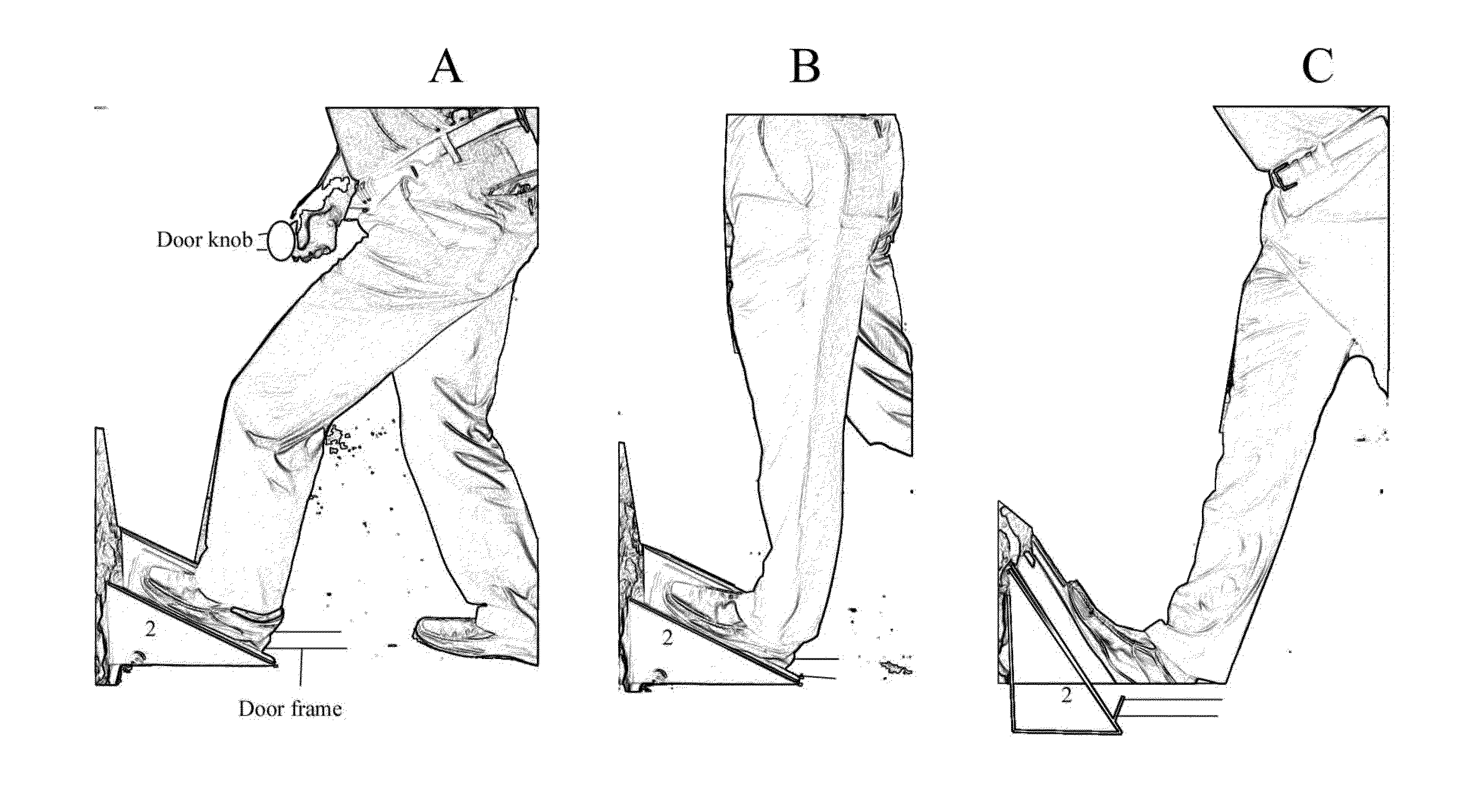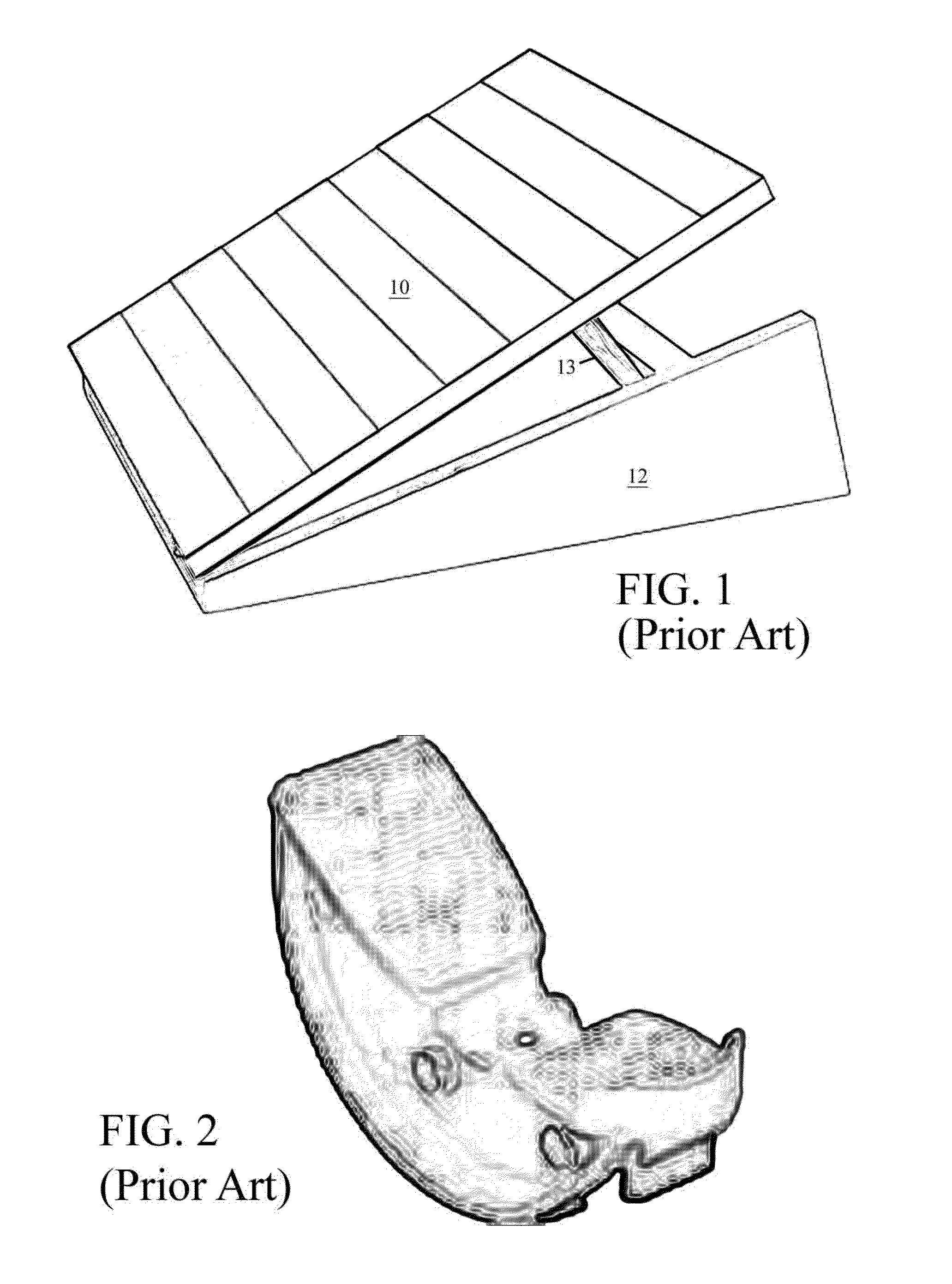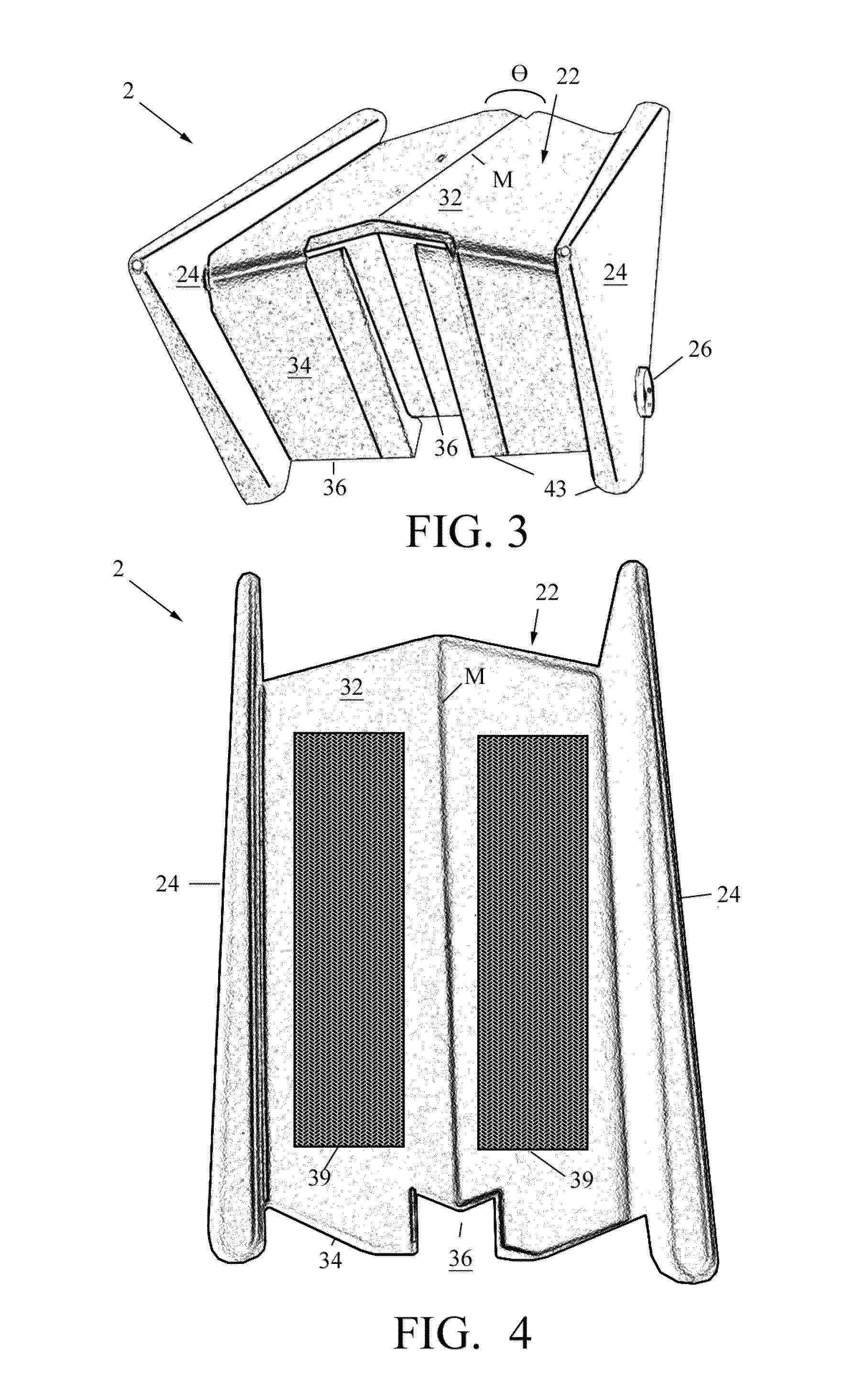Calf stretching device
a calf and calf technology, applied in the field of muscle stretching devices, can solve the problems of affecting gait, balance, and force on the lower extremity, and the tight calf muscles are uncomfortable in and of themselves, and achieve the effect of promoting hyperextension of the knee and stable and robust calf stretching
- Summary
- Abstract
- Description
- Claims
- Application Information
AI Technical Summary
Benefits of technology
Problems solved by technology
Method used
Image
Examples
Embodiment Construction
[0022]The present invention is an improved calf stretching device that helps to increase flexibility, improve posture, and promote rehabilitation of Achilles tendon injuries, shin splints, calf strains and other lower leg injuries.
[0023]FIG. 3 is a front perspective view of a calf-stretching device 2 in accordance with an embodiment of the invention. The device 2 is generally wedge-shaped, with a ramped body 22 defined by two contiguous sections of different lengths, including along foot-placement section 32 and a shorter section 34, joined end-to-end and flanked by opposing triangular side panels 24. Preferably, the entire ramped body 22 is formed as a unitary hollow injection-molded plastic component open-faced at bottom 36 (obscured underneath) and having a hollow interior.
[0024]One skilled in the art will understand that in place of an open-faced at bottom, the bottom may be partially closed by a third contiguous section having a length intermediate to that of the long foot-plac...
PUM
 Login to View More
Login to View More Abstract
Description
Claims
Application Information
 Login to View More
Login to View More - R&D
- Intellectual Property
- Life Sciences
- Materials
- Tech Scout
- Unparalleled Data Quality
- Higher Quality Content
- 60% Fewer Hallucinations
Browse by: Latest US Patents, China's latest patents, Technical Efficacy Thesaurus, Application Domain, Technology Topic, Popular Technical Reports.
© 2025 PatSnap. All rights reserved.Legal|Privacy policy|Modern Slavery Act Transparency Statement|Sitemap|About US| Contact US: help@patsnap.com



